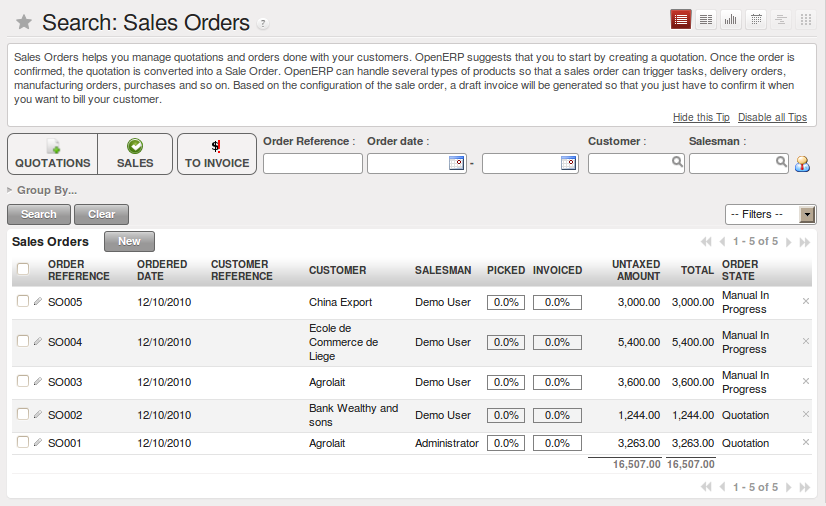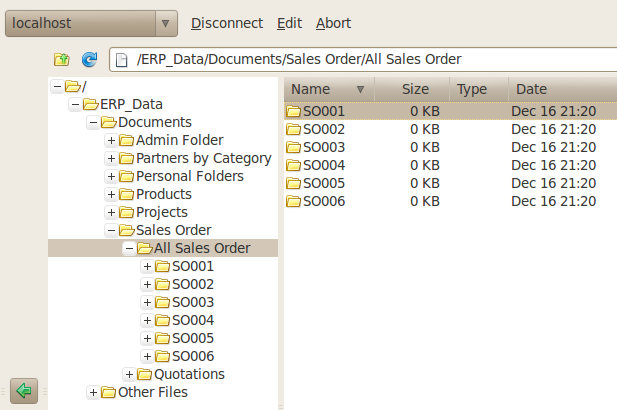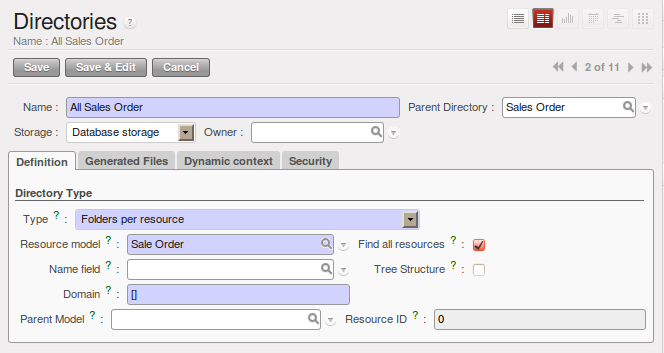Mapping between OpenERP Resources and Directories¶
Each directory can either have the type Static or Folders per resource. A static directory, as
with operating systems, is the classic directory that can contain a set of files. On the other hand, the directories
linked to systems resources automatically possess sub-directories for each of the resource types defined in
the parent directory.
Tip
Directories in English
To keep them synchronized to the working language, directory names are not translatable. But OpenERP’s demonstration data automatically creates directories in English. You can rename them through the menu .
For example, you can look at the directory shown in . You will see the directory for all the orders present in OpenERP that was created automatically by the system.
Directories can follow a tree structure, like the tree of resources in OpenERP. For example, if you go to the directory you will see the structure of the analytic accounts.
To define a directory containing a specific type of resource, you have to define parameters when you define the directory itself:
- Type : Folders per resource
- Resource model : Choose one of the system objects
- Domain : an event filtered so that it sees only a subset of the resources
- Tree Structure : to show the resources hierarchically
This is a very flexible approach because any modification of the resource in OpenERP is automatically reflected in the document management system. So when the quotation gets confirmed in OpenERP the directory no longer appears as a quotation through FTP access.
Here are some examples of directories linked to OpenERP resources that could be helpful when configured in the document management system:
- Quotations and Order: storing documents that relate to orders,
- Products: for storing products’ technical datasheets,
- Users: to automatically define a directory owned by each user of the system,
- Employees: to store documents about employees, such as their CVs, your interview notes, contract details, and their annual assessments,
- Support Requests: storing items about requests or about technical support responses,
- Analytic Accounts or Project: to store project management and tracking documents.


